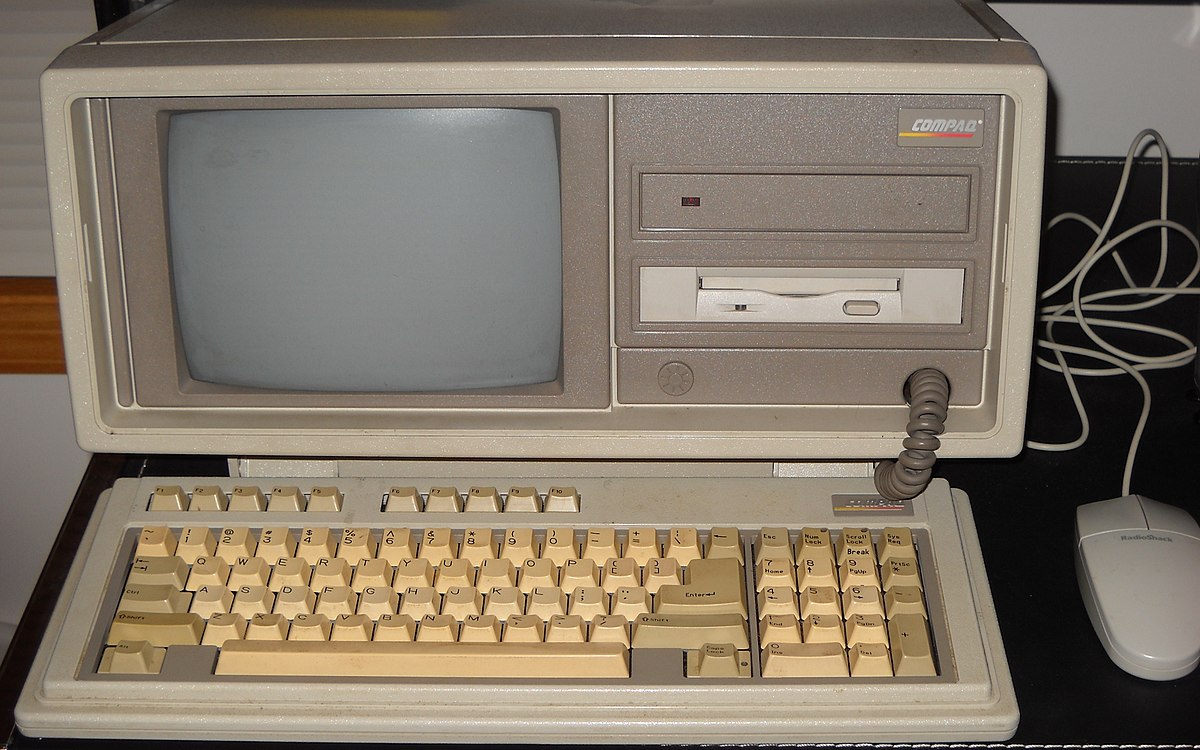Compaq Portable 1
|

| Compaq Computer Corporation was founded in February 1982 by Rod Canion, Jim Harris and Bill Murto, three senior managers who left Texas Instruments and invested $1,000 each to form their own company. Sketched on a paper place mat in a Houston pie shop, the first product was a portable personal computer able to run all of the software being developed then for the IBM PC. |
The Compaq Portable was the first 100% compatible IBM computer clone. Why make an IBM clone? Because the IBM PC was extremely popular, and taken very seriously by businesses looking for a computer system.
Problem: Compaq couldn't just copy IBM's BIOS to make their new machine guaranteed IBM compatible, this would be illegal, and easily proven by IBM.
Solution: Reverse-engineer IBM's BIOS. Compaq used two sets of programmers - one group analyzed the original code and made notes of exactly how it responded.
The second group took these notes, and wrote their own BIOS that performed exactly the same.
After one year and a million dollars, they were successfull. They had a legal BIOS identical in operation to that of the IBM computer.
| In March 2007, Paul Dixon writes: As an old Compaq employee, it was interesting to read the sections on Compaq computers, but I have a couple of comments. I have frequently read the story of how Compaq supposedly created a 100% compatible BIOS, but this is not really correct. It is true that Compaq had programmers who had seen the IBM BIOS listings, and many who had not. This was always ascertained in interviews by somewhat cunning means. Programmers who had read the BIOS were known as dirty and others were known as clean. Dirty programmers were banned from working on the BIOS, but could work on the other big project which was BASIC. Functionality of the IBM BIOS was not determined by looking at IBM code - this was banned. In fact, functionality was determined by a process known as "black boxing", which involved treating the BIOS as a black box and feeding every possible input to it and recording the output. For example, the keyboard driver was written by Steve Flannigan who had written the code for Silent 700 terminals at TI. He produced what appeared to be a fully compatible set of routines, but was told by someone that his code was only 50% of the size of IBM's. Compaq never found out why IBM's code was so much bigger, and no incompatibilities were ever attributed to this section of the BIOS, but hours were spent in trying to find additional functionality. No one in Compaq ever declared that the BIOS was 100% compatible. The figure was a moving target, keeping a systems engineering department on their toes for years. |
More than a mere IBM clone, the Compaq Portable is something different, it's transportable, designed so it can easily be taken aboard an airliner as carry-on luggage.
Result: The machine was very successful for Compaq and the company took in revenues of $111 million in its first year, a record in American business.
Because of the Compaq Portable, and subsequent systems released:
On January of 1983, BYTE magazine published a review of the Compaq Portable computer.
Comments
Post a Comment